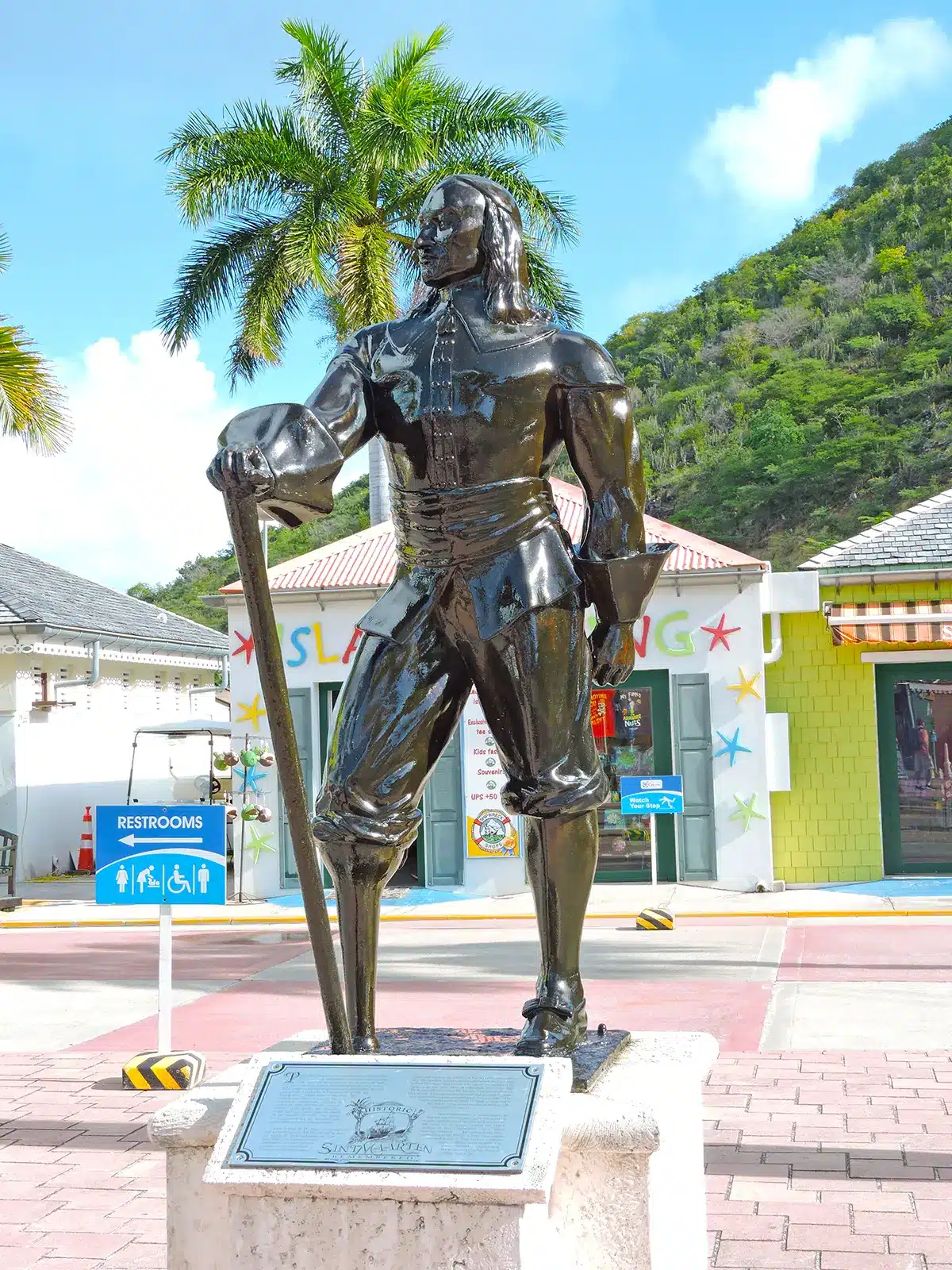Peter Stuyvesant | Philipsburg
“The interesting history of Philipsburg fights between the Spanish and the Dutch and the heroic act of Peter Stuyvesant.”
During the 80-year’ war in Europe between 1528-1648, the Southern Catholic countries of Europe, with the lead, of Spain, were in a fierce war against the Northern Protestant countries, mainly the Netherlands. The Spanish controlled the salt business at that time and did not want the English, French, and particularly the Dutch salt hampering their monopoly, so they decided in 1633 to invade Sint Maarten, where salt was found by the Dutch.
Salt in those days was what oil is these days, a multimillion business. The Dutch had started to develop Sint Maarten as a salt source for the Netherlands to be independent of the Spanish supplies. Unfortunately, after a short battle of about a week, the Dutch gave the island up to the Spanish force and were allowed the island. The Spanish forces reinforced the fort at the location of Fort Amsterdam, built by the Dutch into a sturdier stronghold, and added a fort on the hills of Point Blanche.
The Spanish did not intend to harvest the salt in Sint Maarten, they had plenty production worldwide of their own, the Spanish only did not want the Dutch to have it, and profit from it. The garrison, starting with about 250 men in 1636, decreased by sickness, aging and accidents was only about 120 men in total in 1644, The garrison occupying the forts fell into boredom and neglect of their duties, no replacements were able to come to Sint Maarten and other islands, the Spanish forces were too spread out through the Caribbean, too much territory to guard. From the stronghold of the Dutch in Sint Eustatius, since 1636, the West Indian Company, was eyeing the fortunes of salt in Sint Maarten.

By 1644 they decided it was time to get Sint Maarten back under Dutch control and found their director of the Netherlands West India Company in Curacao Peter Stuyvesant suitable for this job. Together with reinforcements from the Netherlands, Stuyvesant formed a fleet of 13 ships and formed a force of 800 to 1000 men, about half of them were soldiers, mostly from the garrison of Curacao, which was left without a defense force during this campaign. Peter Stuyvesant figured out that both forts facing Great Bay would destroy his fleet while attempting to land there, so he decided to land his troops a few bays to the West of Great Bay, in Cay Bay. From there his force moved over the hills towards Belair to setup a battery of cannons above the Spanish fort at Little Bay.
When their firing position finally was ready Peter Stuyvesant dispatched a letter to the Spaniards and decided to hoist a flag at the battery himself, to enforce the summons he sent to the Spanish garrison. The Spanish had not taken any action, against the moving Dutch force in their back so far, besides turning some cannons in preparation, now looked at an irresistible easy shooting target on the hill, Stuyvesant with his flag. They fired a cannon in his direction, which immediately was a strike; it hit Stuyvesant’s right leg and the face of one of his captains.
From that day onwards Peter was known as “Pet Leg Pete” or “Old Silver Nails” because he used wooden stick studded with silver nails as a prosthesis.


